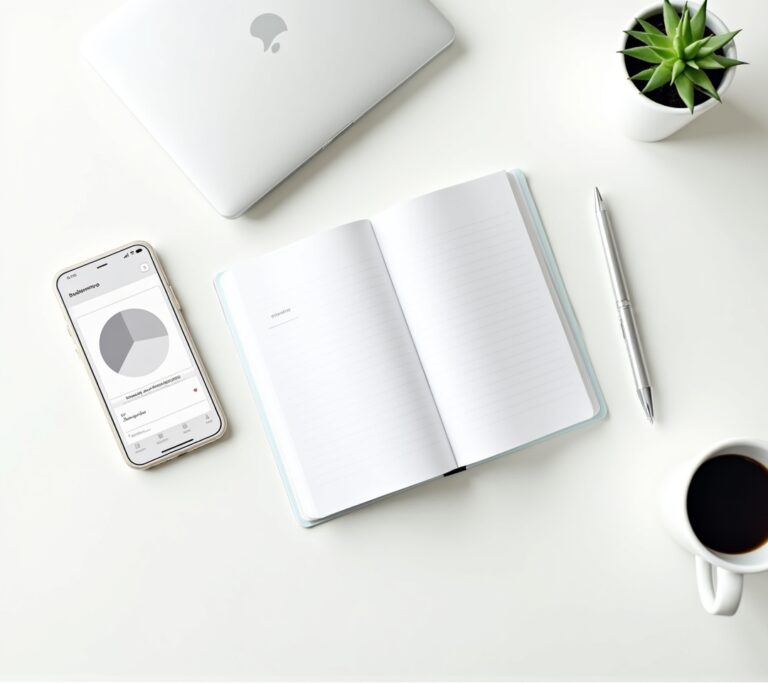Advertisements
Did you know that 65% of Americans have no idea how much they spent last month? I used to be one of them! After years of wondering where my paycheck disappeared to, I finally got serious about tracking my budget.
Let me tell you, finding the right budget tracking method changed everything. It’s not just about knowing where your money goes – it’s about taking control of your financial future. And trust me, if this scattered-brain teacher can do it, anyone can!
The Old-School Envelope System (My Gateway Drug)

I started with the envelope system because my grandma swore by it. You literally stuff cash into envelopes labeled for different expenses. Rent, groceries, fun money – each gets its own envelope.
The first month was rough. I accidentally used my grocery envelope for gas money (oops!) and had to eat ramen for a week. But something magical happened – I actually saw where every dollar went.
Here’s what worked for me:
- Label envelopes clearly (learned this the hard way)
- Keep them somewhere safe but visible
- When the envelope’s empty, you’re done spending in that category
- Don’t borrow from other envelopes unless it’s an emergency
Spreadsheets: For the Control Freaks Like Me
After a few months, I graduated to spreadsheets. Excel became my new best friend! I could track every penny, create fancy graphs, and actually see patterns in my spending.
Setting up my first budget spreadsheet took forever. I must’ve watched a dozen YouTube tutorials before getting it right. But once I had my template, tracking expenses became almost addictive.
My spreadsheet essentials include:
- Income tracking (all sources)
- Fixed expenses (rent, insurance, etc.)
- Variable expenses (groceries, entertainment)
- Savings goals with progress bars
- Monthly comparison charts
Pro tip: Google Sheets is free and syncs across devices. Game changer when you’re updating expenses on the go!
Budget Apps: Technology to the Rescue
Eventually, manually entering every transaction got old. That’s when I discovered budgeting apps! These little lifesavers connect to your bank accounts and categorize expenses automatically.
I’ve tried tons of them – some were amazing, others not so much. Mint was my first love because it’s free and pretty straightforward. Though sometimes it miscategorizes things (no, Mint, the pet store isn’t a restaurant!).
YNAB (You Need A Budget) completely changed how I think about money. Yeah, it costs money to save money (ironic, right?), but their zero-based budgeting approach really works. Every dollar gets a job before you spend it.
The 50/30/20 Rule: Simplicity at Its Finest
When all the detailed tracking felt overwhelming, I switched to the 50/30/20 rule. It’s beautifully simple: 50% for needs, 30% for wants, 20% for savings and debt.
This method saved my sanity during a particularly hectic school year. I didn’t have to track every coffee purchase – just made sure my spending fit within those three buckets. Sometimes the “wants” category got a little stretched (those teacher supply purchases add up!), but it kept me mostly on track.
The key is being honest about needs versus wants. Netflix might feel like a need after a long day, but it’s definitely a want!
Hybrid Approaches: Mix and Match for Success
Here’s the thing – you don’t have to pick just one method. I currently use a hybrid approach that works perfectly for my lifestyle.
I use YNAB for the big picture and monthly planning. The envelope system still helps with my “fun money” budget (cash makes it real!). And I keep a simple spreadsheet for tracking financial goals and net worth.
Some combinations that work well:
- Apps for daily tracking + spreadsheets for monthly analysis
- 50/30/20 for overall structure + envelopes for problem categories
- Zero-based budgeting app + cash for discretionary spending
Making It Stick: The Real Challenge

Let’s be real – the hardest part isn’t choosing a method. It’s sticking with it! I’ve fallen off the budget wagon more times than I can count.
What finally made it stick was making it part of my routine. Sunday mornings became my “money dates” – coffee, budget review, and planning for the week ahead. Sometimes I’d even reward myself with a fancy latte if I stayed under budget the previous week.
Remember, the best budget tracking method is the one you’ll actually use. Don’t let perfect be the enemy of good! Start somewhere, anywhere, and adjust as you go.
Your Financial Journey Starts Now
Budget tracking isn’t about restriction – it’s about freedom. Freedom from financial stress, freedom to save for what matters, and freedom to make informed choices with your money.
Whether you go old-school with envelopes or high-tech with apps, the important thing is to start. Pick one method that sounds doable and give it a honest try for at least a month. You might surprise yourself!
Ready to transform your financial life? Check out more money-saving tips and financial wisdom at Cashflow Zen. We’re all about making personal finance less scary and more achievable – one budget at a time!




[…] me on this one. For more tips on managing your money and growing your business, check out other posts on Cashflow Zen – we’ve got your back on this wild self-employment […]